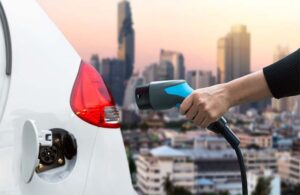Proposed to implement a steady electric mobility across the country, Indian government has shown signs of revealing final details of a nationwide battery-swapping policy for electric two- and three-wheelers in this month.
 Though, India won’t immediately launch standardized batteries for swap stations as it would need “close coordination” among swapping-point operators, that will be the long-term goal, the document states.
Though, India won’t immediately launch standardized batteries for swap stations as it would need “close coordination” among swapping-point operators, that will be the long-term goal, the document states.
Replacing expended batteries with fresh ones in a matter of minutes has the potential to expedite India’s push toward electrifying the world’s biggest two-wheeler market, where lack of charging stations is a key hurdle to EV adoption.
Switching to cleaner transport is crucial for India to achieve its goal of cutting 1 billion tons of carbon dioxide emissions by the end of this decade and turning net carbon zero by 2070.
Representatives from the Ministry of Road Transport and Highways, responsible for implementing the policy, didn’t immediately respond.
In India, battery swapping is mainly used by electric scooters and rickshaws that make up e-commerce delivery fleets. By 2030, about 30% of all vehicles sold in India will be electric but they’ll mostly be two- and three-wheelers; electric passenger cars will make up only about 5% of total EV sales, consultancy Arthur D. Little estimates.
Some battery pack developers and scooter makers have pushed back against standardized batteries, the person familiar with the matter said, asking not to be identified because the discussions are private. They worry interoperability will slow innovation considering how rapidly the technology is evolving, the person said.
Another reason why some scooter makers oppose standardized batteries is that battery design accounts for a large part of the way a two- or three-wheeler is constructed, and importantly, is how a brand differentiates itself, the person said.
To increase EV uptake, the government has increased subsidies for electric two-wheeler purchases and launched bulk procurement tenders for electric three-wheelers and buses. It’s also offered 259 billion rupees ($3.3 billion) of production-linked incentives to boost domestic EV manufacturing.
To leave room for innovation in battery technology, India won’t enforce the use of the same type of cells just yet, according to the document, which canvassed around 100 stakeholders.
It would be preferable, however, if the battery packs weigh not more than 10 kilograms (22 pounds), so they’re not too heavy for any person to use, and have a minimum 1 kilowatt-hour capacity, it said.
They should also have a cylindrical cell format and chemistries including lithium iron phosphate and nickel manganese cobalt.

